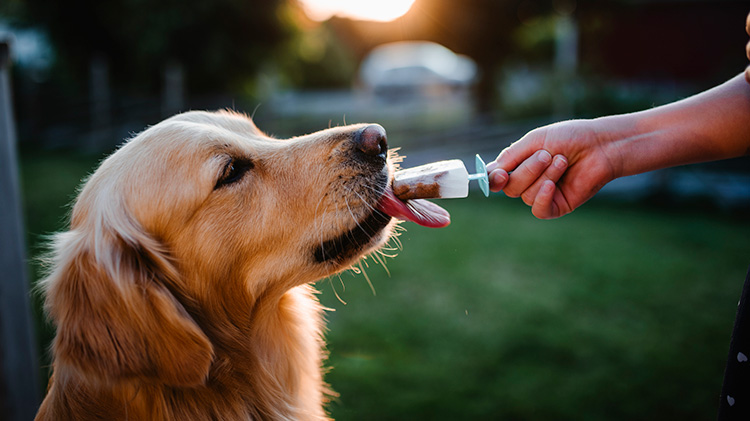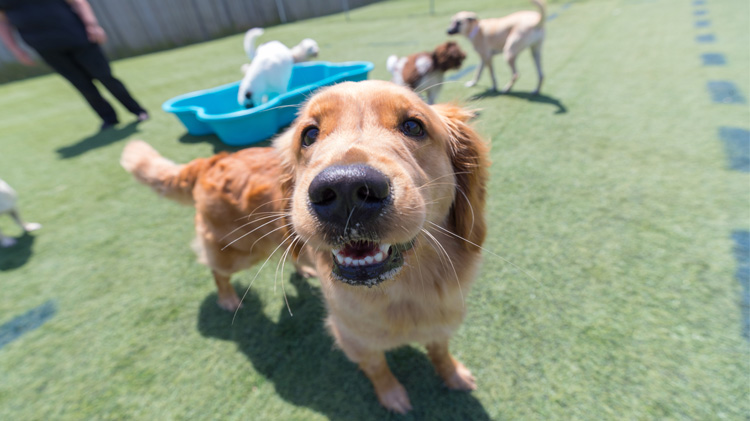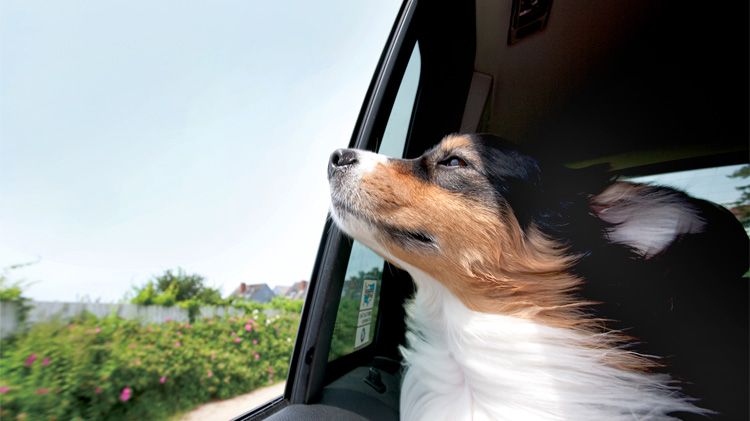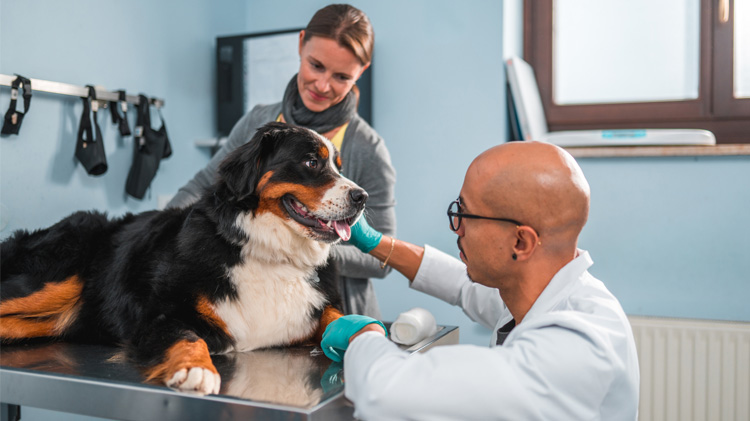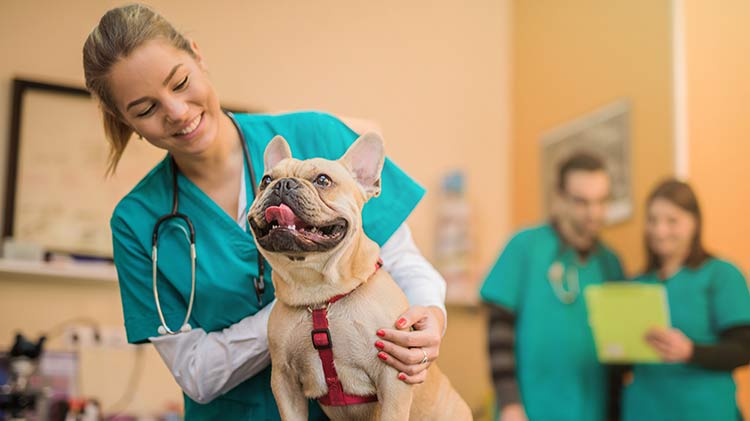Help keep your pet hydrated this summer
Cat and dog hydration are important any time of year, but especially during the hot summer months.
Just like us, pets need water to survive and thrive. From supporting organ function to aiding in digestion, your pet’s body relies on water to help keep running smoothly. Staying hydrated is how pets can stay healthy, which is especially important as temperatures rise, and pet owners start spending more time outside with their furry family members.
In North America, July doubles as both the hottest month of the year and National Pet Hydration Month. During the summer, pets are more likely to suffer from dehydration, heatstroke and heat exhaustion. In fact, Trupanion sees 4.5x more claims for heatstroke from June to August, and the average cost for heatstroke, based on our claims, is about $1,100.footnote 1
Learn about water needs, dehydration and how to help keep your pet hydrated this summer.
How much water do dogs and cats need?
Hydration in pets is important for almost every function of their body. Without enough water, blood flow and oxygen decrease, which can lead to kidney and other organ failure. The amount of water your pet needs will vary based on their general health, exercise levels and the temperature outside. Water helps your pet regulate their body temperature, so in warmer weather, pets need more water to help stay cool.
See that your pet has easy access to their water bowl. Unless advised by your veterinarian, never restrict or limit your pet’s water intake for any reason.
How do dogs and cats get dehydrated?
Simply put, not drinking enough water can cause dehydration in dogs and cats — it occurs when they lose more water than they consume. Pets are prone to dehydration during the summer because they lose water much faster when in the heat. Veterinarians see more cases of dehydrated dogs and cats in the summer, but it’s worth noting that dehydration can still happen any time of the year.
Dehydration happens faster in pets than in humans because not only do pets get hot faster, but they don’t sweat like us. Cats have sweat glands like we do, but most are covered in fur, so they can’t sweat as efficiently. Dogs, on the other hand, lose water through panting, breathing, urinating, defecating and evaporation through sweat glands in their paws.
Signs of dehydration in dogs and cats
Wondering how to tell if your dog or cat is dehydrated? Per the American Kennel Club (AKC), try to keep an eye out for these dehydration symptoms:
- Loss of appetite
- Loss of skin elasticity (gently pinch the skin and note how quickly it falls back into place)
- Vomiting (with or without diarrhea)
- Lethargy or reduced energy levels
- Panting
- Unresponsiveness
- Sunken and dry eyes
- Dry nose
- Dry and sticky gums
- Thick saliva
If you notice any of the above symptoms, you may have a dehydrated dog or cat on your hands. Call or visit your veterinarian right away.
9 tips to keep your pet hydrated
Learn how to help keep pets hydrated and prevent dehydration.
1. Place your pet’s water bowl in a noticeable place
For easy and convenient access, place your pet’s water bowl in a prominent location in your home. It’s also important to provide water for pets that are playing or spending time in the yard, especially on a hot day.
2. Provide fresh, clean water regularly
Pets (and people) don’t always drink as much water as they should, and some pets are pickier about their water than others. You may need to provide fresh and clean water throughout the day, rather than just topping off their water bowl as needed.
3. Try to make hydration for dogs and cats fun
Got a picky drinker on your hands? They might just need extra motivation to stay hydrated. Different types of water bowls, such as those with a fountain, can help encourage your pet to drink more water. You could also try adding ice cubes in their water bowl for them to play with.
4. Think outside the water bowl
Drinking straight out of a water bowl isn’t the singular way to help hydrate your pet. Not only is watermelon safe for dogs and cats to eat, but it’s low in calories, packed with nutrients and high in water content. This yummy, healthy and hydrating snack is perfect for pets during the summer. Just be sure to remove the seeds and rind or use a seedless watermelon.
Pet-safe popsicles are another creative way to help keep your pet hydrated. Not only do pets love them, but they’re easy to make at home. Many recipes with only a few ingredients can be found online.
5. Keep an eye on your pet’s water habits
It’s not necessary to track your pet’s precise water intake but try to keep an eye on whether they’re drinking more or less water than usual. A change in their diet, such as switching from dry to wet food, may impact their water intake. That said, decreased or increased thirst could also indicate that something’s wrong, so talk with your veterinarian if you notice any changes in your pet’s water habits.
6. Bring water everywhere you take your pet
Regardless of the weather or activity, consider bringing a collapsible water bowl and water bottle with you if you’re heading out with your pet. Whether you’re at the farmer’s market or a hiking trail, regularly offer water to your pet anytime you’re on the go.
Many dog parks provide water for canines to enjoy while they play, but picky drinkers might not want to drink out of a public water bowl. Not to mention, public water bowls can also increase your pet’s chance of getting sick or contracting a parasite. For these reasons, consider bringing your own source of water when you head to the dog park.
7. Check the weather and plan activities accordingly
When the weather is especially warm, be mindful of how much exercise you give your pet. Dogs don’t always slow down or stop to drink while playing fetch or running in the yard. A hot day, for example, may be better suited for a short walk rather than a Frisbee session.
Early mornings and late evenings are often more comfortable for your furry friend during the summer. Avoid strenuous activities in the middle of the day, which is when temperatures are at their highest.
8. Provide adequate shade
Pets aren’t as good at regulating their body temperature during extreme heat compared to humans. When playing outside, shade and water are crucial for helping your pet beat the heat. If your backyard gets full sun, consider purchasing an umbrella, or limit your pet’s outdoor time. Without adequate water or a way to stay cool, pets are vulnerable to heatstroke, which can cause severe damage to internal organs.
9. Be mindful of your pet’s breed
Certain breeds, such as brachycephalic (short-nosed) pets like French bulldogs and pugs or Himalayan and Burmese cats, are less tolerant of heat and have higher than average water needs. Due to their breathing problems, they’re not as efficient at cooling themselves down, so be extra mindful of these breeds.
You might be tempted to shave your pet during the summer, especially if they have very thick or dense fur, but this could do more harm than good. Like the insulation of a house, fur helps your pet stay warm in the winter and cool in the summer. Plus, their fur helps protect them from getting sunburnt.
Bonus tip: Protect your pet all year long
Protecting your pet isn’t only important during the summer. No matter the season, Trupanion can help owners protect their cat or dog all year long.
Learn more about Trupanion and how pet insurance can help give your furry loved one the best veterinary care.
return to reference 1 Based on internal Trupanion data.
